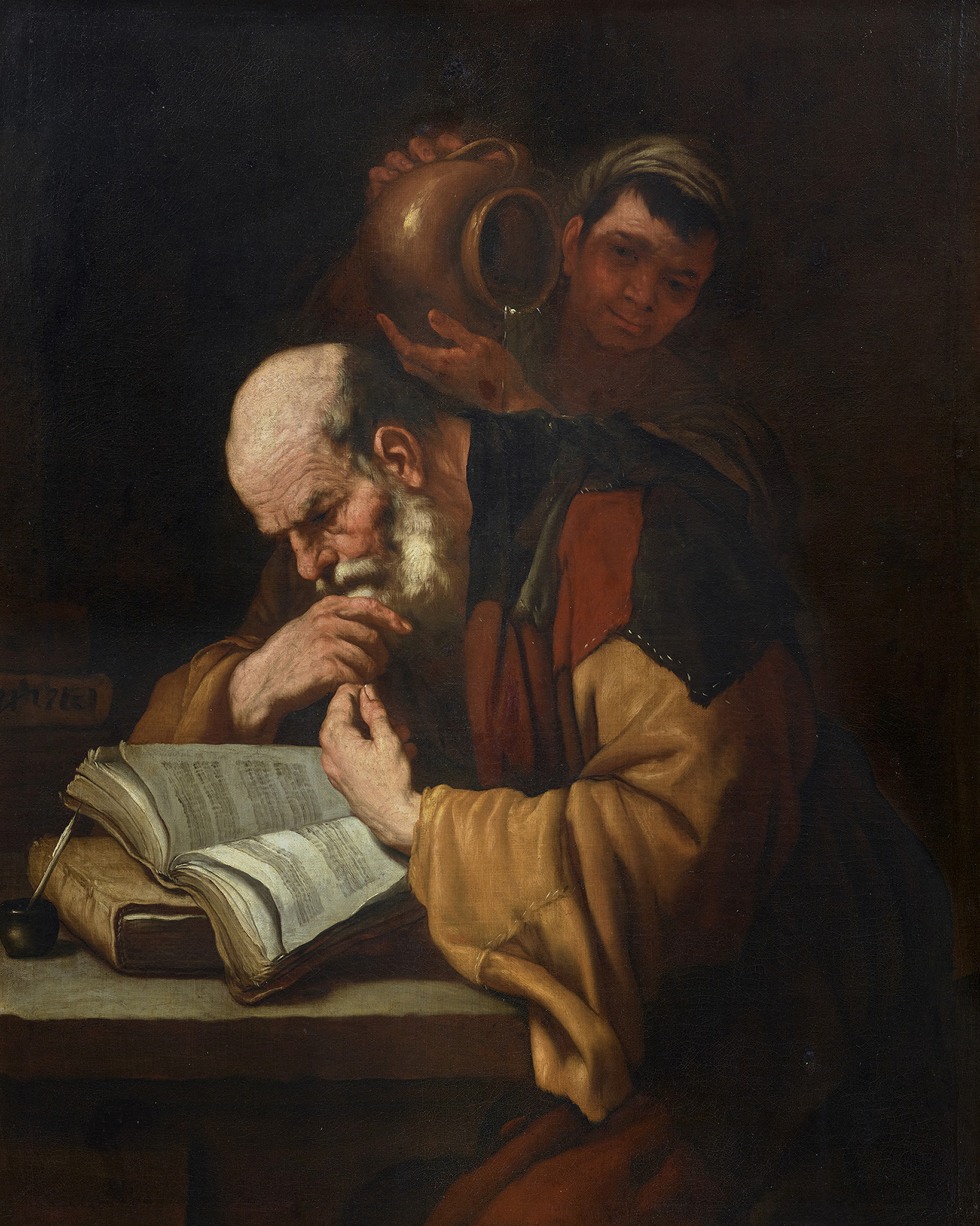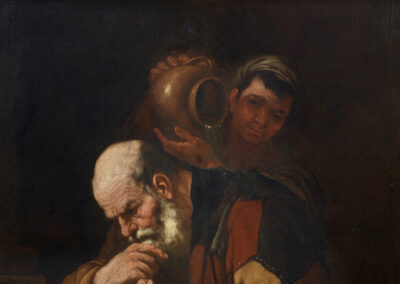Imaginary portraits of philosophers and the depiction of exemplary events in their lives is a widespread theme in 17th-century Italian painting. Oreste Ferrari (1986) explains this success in a sequence that begins with the series of philosophers painted by Ribera for the 3rd Duke of Alcalá and the Prince of Liechtenstein, based on naturalism, with portraits taken from life, and anti-idealism, depicting characters sublimated by the classical philosophical canon as beggars. The popularity of these models was linked in the second half of the 17th century with the current of Cartesianism and Gasendism that led to the foundation of the Accademia degli Investiganti in Naples in 1663. Luca Giordano, in his youthful period more "riversideThe painting of the 1650s faithfully follows this typology of portraits of ragged philosophers that José de Ribera had invented two decades earlier, a period in which, as one of his biographers, the painter Antonio Palomino, states, "... the portraits of philosophers in rags and tattered clothes were the most common...".he was so close in his own way [Ribera's], who did things of his own invention, which seemed to be original to his teacher". In fact, in 1951, the Marquis of Lozoya attributed this painting to José de Ribera.
In this canvas Giordano visually narrates an event that Diogenes Laertius recounts in his Lives, opinions and sentences of the most illustrious philosophersin which he follows the author's usual scheme in his biographies: relating a maxim of the philosopher to a life anecdote. In this case, the anecdote would superficially correspond superficially to the neo-Stoic current in which, at least apparently, Giordano would participate (Ferrari-Scavizzi 2000). Laertius recounts the anecdote as follows: "When his wife Jantipa had once reviled him with words, and then thrown water on him, he replied, "Did I not say that when Jantipa thundered she would rain?""and the maxim that he deduces from his stormy relationship with his wife, he explains in these words: "...the most important thing is that he has a relationship with his wife.one should deal with a rough woman as they do with false and unsafe horses; for just as the latter, having tamed them, make more easy use of the loyal, so I too, after suffering Jantipa, find it easier to trade with all the other nations."(Volume II, paragraph 15).
Emilio Pérez Sánchez (2002) considers this painting to be a youthful work and raises the possibility that the canvas of this subject, which, in a document dated July 1684, is proposed, together with a Cato's suicideThe hypothesis that Ferrari-Scavizzi suggest, which is impossible to verify, is in fact this one and not the one in the Molinari-Pradelli collection, as Ferrari-Scavizzi suggest, as all three would fit the format "...".tela da imperatore"(135 x 100 cm) specified in the proposal, but which allows us to speculate on a possible purchase by the viceroy of Naples at the same time as the aforementioned document, the VII Marquis del Carpio, a person of accredited avidity in the Neapolitan art market, and that, by this means, it reached the collection of his successor in the viceroyalty, the IX Count of Santisteban, as it is recorded that he acquired some pieces in his complex testamentary estate.


